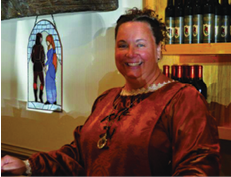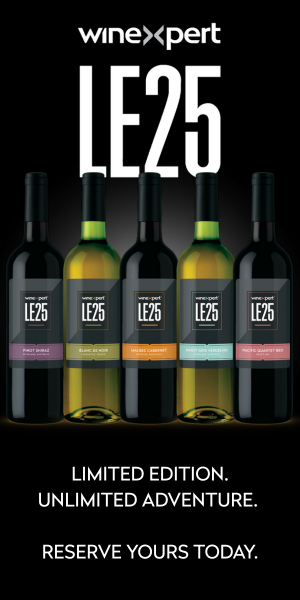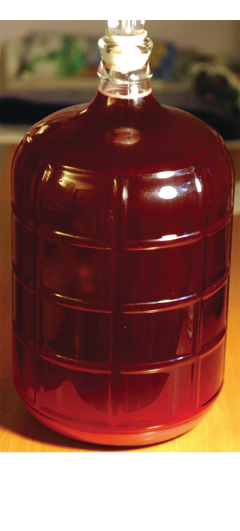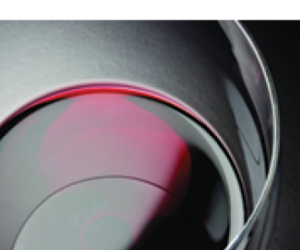Country wines come in all different styles and varieties, but berry wines are perennial favorites. Summertime brings with it a bevy of fresh, ripe berry options to craft some fine berry wines. Two berry wine experts share some winemaking advice.
Sandi Vojta, Winemaker at Prairie Berry Winery in Hill City, South Dakota. Sandi is a fifth generation winemaker. She is the chief fermentation officer at Prairie Berry Winery.
We make many different wines using both domestic and wild berries. My great-great-grandmother started making these wines when she emigrated from Moravia, Czechoslovakia to the Dakota Territory in 1876. She utilized the wild prairie berries she found growing on their homestead because that was all she had available to produce wine. The tradition of making berry wines has been passed down for five generations to me. It is such a strong part of my heritage.
The style of wine I produce really depends on the type of fruit or berry, and of course the growing year. Some fruits are flexible and can be made into many styles while others tell you how they want to be made. We also have a wide variety of wine drinkers that visit our winery, which makes it necessary to provide a little bit of every style.
Our first goal in making wine is to source all the wild fruit and berries we can from South Dakota. We have established a consistent network of growers and pickers throughout the state. We do grow some of our own fruit and are currently in the process of expanding that capability.
We make wines pretty much all year long. Most of the wild berries we freeze as they are harvested because they do not ripen all at once. For example, we may start harvesting chokecherries in late July and finish in October. This allows us the opportunity to pull
the berries out of the freezer inJanuary or when tanks are free and start a fermentation.
I am very much all over the board when it comes to yeast strains. A few really good workhorses, however, are 71B, DV10 and K1 (V1116).
I tend to ferment my red berry wines a little warmer, around 61–64 °F (16–18 °C) and my white or blush berry wines a touch cooler at around 58–60 °F (14–16 °C). I feel that I do get better color extraction on my reds at a warmer temperature, but not too warm because I want to maintain the fruit character. The white berries I ferment cooler as you would a white grape in that you are not worried about color extraction, but want to keep the fruit varietal characteristic crisp and clean.
I will make the decision about what style of wine to make based on the growing year, fruit quality, etc. and what the fruit is telling me it can or cannot be made into. Some years you may have enough acid and sugar to allow the fermentation to be stopped, retaining residual sugar. In other growing years you may have to ferment dry, then back-sweeten to balance it.
The biggest mistake new berry winemakers make is lack of sanitation and proper use of SO2 to prevent spoilage and oxidation. Many berries are naturally low in acid, thus oxidizing and spoiling easily. The key is to keep everything clean, containers topped up, know what your pH is and adjust your SO2 levels accordingly.
If you want to try making berry wines, one of the main tips is to add your pectic enzyme as early as possible to your must. Add it before you pitch your yeast. This allows the enzyme
more time to do its job before it has to compete with the alcohol. After fermentation is complete and while doing the first racking, add additional pectic enzyme while racking to a new container. This will help to ensure a nice clear fruit wine.
 Kimberly Allen Pugh, Winemaker/Co-Owner at Hill Top Berry Farm & Winery in Nellysford, Virginia. Originally opened as a pick-your-own blackberry farm, Hill Top is a family owned and operated business that expanded into a winery in the late 1990s.
Kimberly Allen Pugh, Winemaker/Co-Owner at Hill Top Berry Farm & Winery in Nellysford, Virginia. Originally opened as a pick-your-own blackberry farm, Hill Top is a family owned and operated business that expanded into a winery in the late 1990s.
We make dry, semi-sweet and sweet berry wines. We try to have something for everybody because some people typically expect these types of wines to be sort of sweet, and at the same time we like to show people that we don’t have to be sweet.
We grow a slight majority of the fruit we use for winemaking, however we also lease and reach out to local farmers and orchards for additional fruit. It all depends on the year. We make all kinds of fruit wines, so if something happens — say frost affects our peaches — we reach out to a local farmer and source what we need.
We make small batches (50-gallon/189-L, 100-gallon/378-L or 150-gallon/568-L) of fruit wine all year round. It’s not like grapes where you have to pick everything at once. We pick what is ripe every day throughout the season. We accumulate fruit all summer and freeze it. Freezing the fruit actually works well for making fruit wines, too — when you thaw them to make wine they give up their juice better.
When we make the wine we use several different yeast strains. I experiment quite a bit. I even use some Champagne yeast. If I find something I like, I stick with it. I keep winemaking records so I know what I did with every batch. If I get a batch that I think is so perfect, I do it the exact same way the next time. Or if I think I can make it better, I’ll keep experimenting.
If you want to make berry wines, my advice is not to leave the crushed fruit in the fermenter for too long. There is a fine line between pressing the juice that is starting to ferment and leaving it too long on the fruit, which can cause an off taste. I would recommend not leaving the fruit in for more than a week or so.


 Kimberly Allen Pugh, Winemaker/Co-Owner at Hill Top Berry Farm & Winery in Nellysford, Virginia. Originally opened as a pick-your-own blackberry farm, Hill Top is a family owned and operated business that expanded into a winery in the late 1990s.
Kimberly Allen Pugh, Winemaker/Co-Owner at Hill Top Berry Farm & Winery in Nellysford, Virginia. Originally opened as a pick-your-own blackberry farm, Hill Top is a family owned and operated business that expanded into a winery in the late 1990s.




